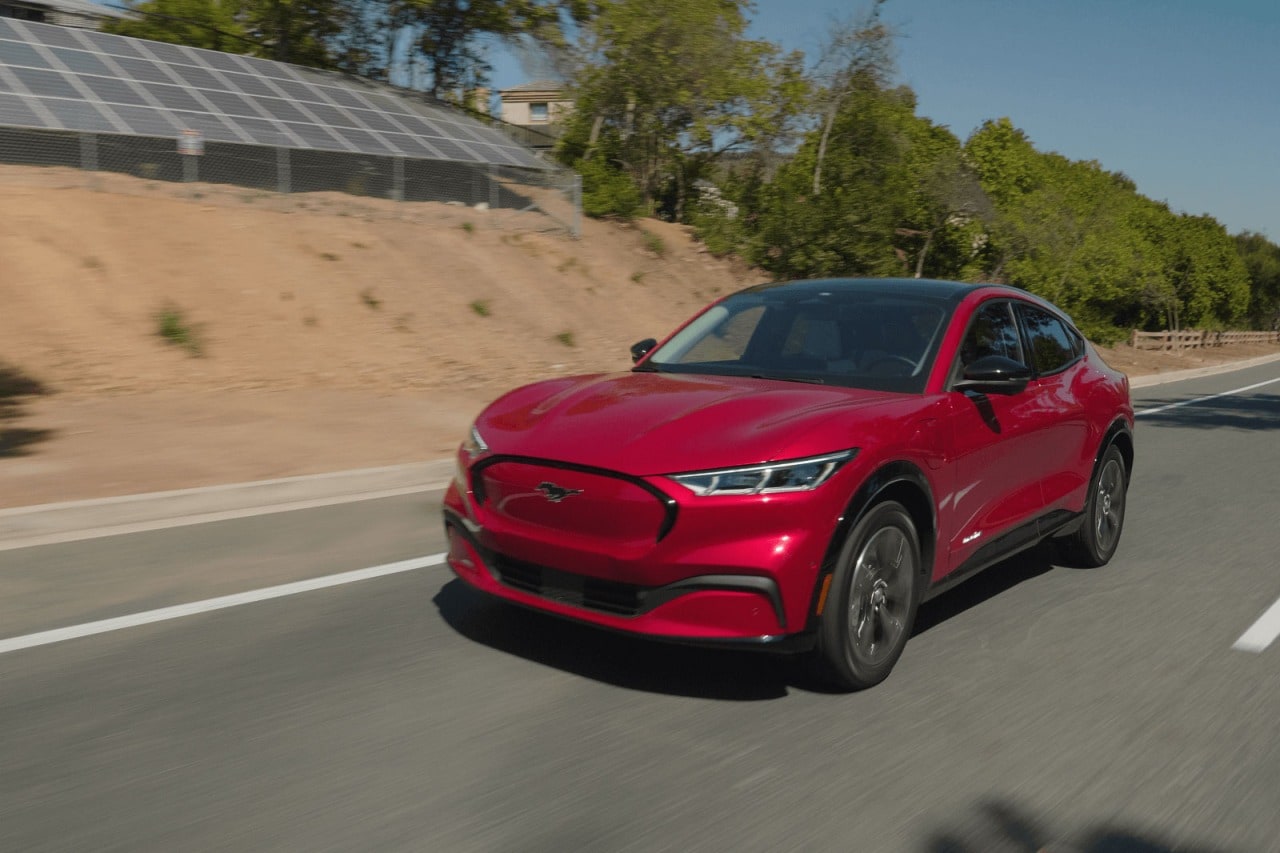- The Mustang Mach-E with the standard-range battery and rear-wheel drive has an EPA range of 230 miles, but we drove ours 264 miles on a single charge.
- That's right on top of the 263 miles we recorded in a Tesla Model Y Performance, which has an EPA range of 291 miles.
- The Mustang Mach-E has exceeded its EPA-estimated range in every real-world test we've conducted.
- Edmunds' EV range leaderboard is embeddable and dynamic, meaning it will update in real time whenever we add a new electric vehicle.
The Ford Mustang Mach-E won our hearts when it debuted last year, taking home our Top Rated Luxury EV award for 2021. Previously, we had tested the Mach-E on two occasions with its bigger, extended-range battery. But what about the standard-range battery, which is less expensive? The EPA estimates a Mach-E with the standard battery and rear-wheel drive can provide 230 miles of range on a full charge.
We regularly see EVs exceed their EPA estimates in our real-world EV range testing, including both Mach-E variants we'd tested before. Could the Mustang Mach-E with the standard-range battery maintain that overachieving tradition? We hit the road in a rear-wheel-drive Mach-E Premium fitted with this battery to find out.
Testing the Mustang Mach-E Standard Range RWD in the Real World
We test every new EV on a standardized drive route in Southern California, driving the vehicles until they have zero miles of range remaining. With the notable exception of every Tesla we've tested as of this writing, most EVs match or exceed their EPA targets during our drives.
The Mustang Mach-E offers a variety of range specifications. The lowest provides an EPA-estimated 211 miles with the standard-range battery and all-wheel drive, while the California Route 1 variant tops the charts at an EPA-rated 305 miles with its extended-range battery and rear-wheel drive.
So how did our rear-wheel-drive Mustang Mach-E Premium with its standard-range battery perform? We recorded a 264-mile jaunt on our testing loop, which is 34 miles more than the EPA's 230-mile projection. That makes the Mustang Mach-E three for three in our testing in terms of outpacing the EPA range estimate by a significant margin.
In fact, this standard-range Mach-E did the best of the three, exceeding its EPA rating by 14.8 percent versus the California Route 1's 12.8 percent and the extended-range AWD's 12.6 percent.






 by
by